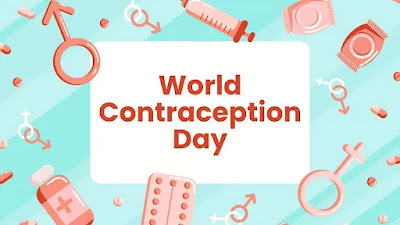Every 26 September, World Contraception Day is observed globally to raise awareness about contraception, reproductive health, and the right to informed choices.
The goal is to enable individuals, especially young people, to make informed decisions about their sexual and reproductive health to prevent unintended pregnancies and plan their futures confidently.
🌟 Why This Day Matters
✅ Promotes Health: Contraception supports maternal and child health by preventing unintended pregnancies.
✅ Empowers Women: Enables women to pursue education and careers, reducing gender inequality.
✅ Supports SDGs: Contributes to achieving SDG 3 (Good Health and Well-being) and SDG 5 (Gender Equality).
✅ Reduces Poverty: Family planning can help break cycles of poverty.
📜 Background
✨ Launched in 2007 by a coalition of international NGOs and scientific and medical societies.
✨ Aims to improve awareness of contraception and enable informed choices.
✨ Supports global efforts for universal access to reproductive health services.
📊 Key Facts
✨ An estimated 257 million women who want to avoid pregnancy are not using safe, modern methods of contraception.
✨ Access to contraception can reduce maternal deaths by 30%.
✨ Education and contraception access are strongly linked to community development.
🎉 How to Observe
✅ Learn: Understand the different methods of contraception and reproductive health rights.
✅ Share Information: Use #WorldContraceptionDay to spread awareness and resources.
✅ Support Organizations: Contribute to NGOs working for reproductive health and rights.
✅ Create Art: Illustrate the link between women’s health, education, and empowerment.
💡 Why It Matters
✅ Ensures the right to informed choices in reproductive health.
✅ Supports women’s autonomy and equality.
✅ Helps communities thrive by improving health and reducing poverty.
“Contraception is not a luxury; it is a basic, essential health care need.” – UNFPA
🎨 Artistic & Educational Opportunities
For artists, educators, and storytellers:
🎨 Create educational posters about contraception and empowerment.
📸 Share reels busting myths around contraception.
🖋️ Write stories highlighting the impact of reproductive rights on women’s lives.
👩🏫 Host discussions or workshops on reproductive health.
📌 Final Thought
On 26 September, World Contraception Day, let us commit to raising awareness, advocating for reproductive rights, and empowering individuals to make informed health decisions.
🏠 For more art, travel, and cultural stories, visit our CRA ARTS Main Page.

Comments
Post a Comment